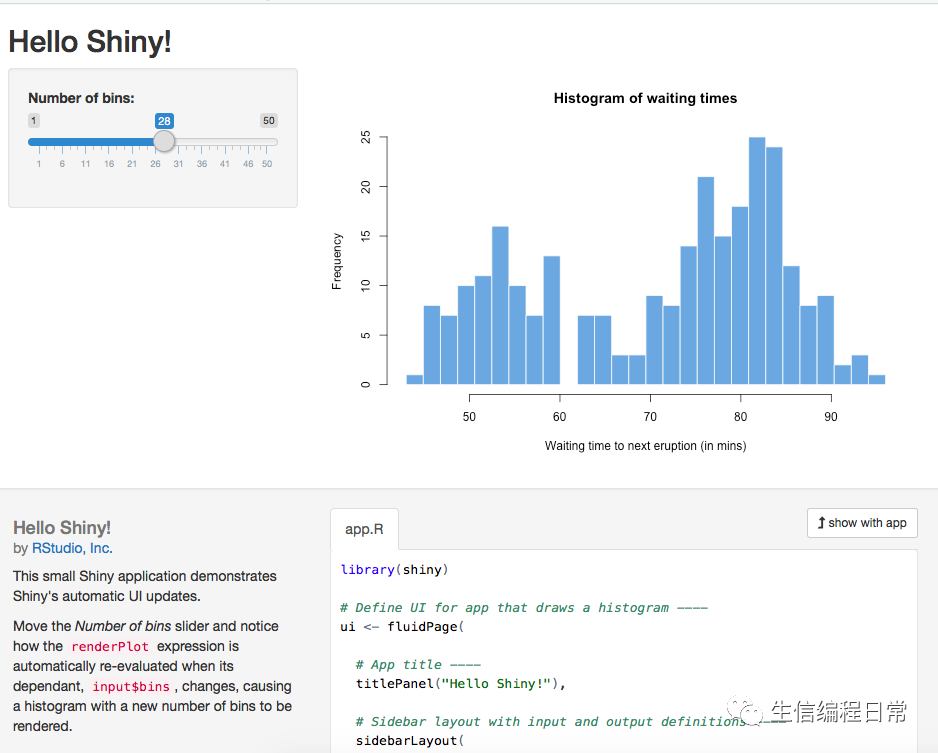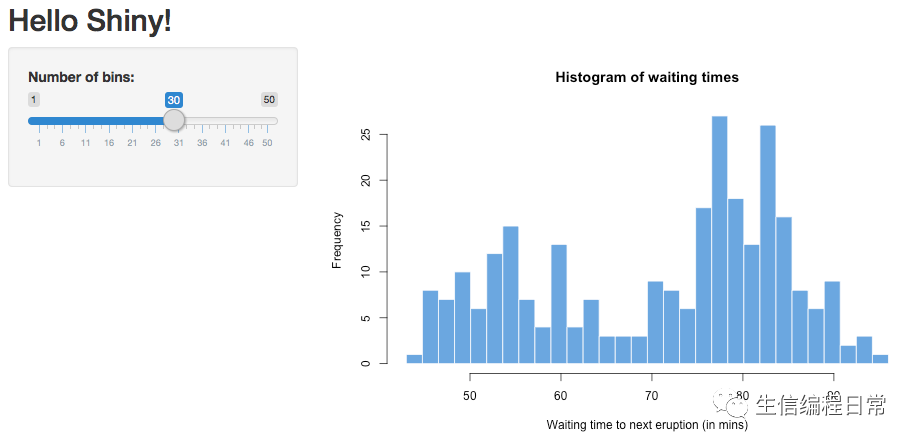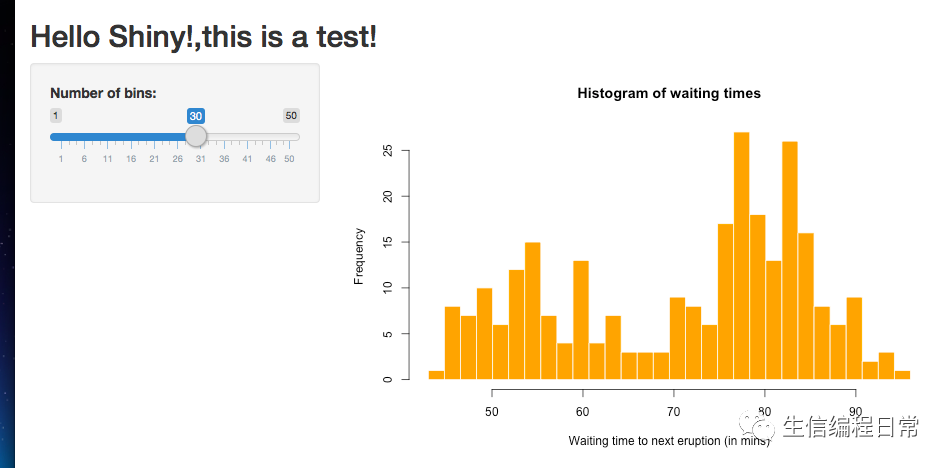安装Shiny软件包
install.packages("shiny")Shiny有11个内置的演示例子来讲解Shiny的工作流程,如01_hello:
library(shiny)#直接展示内置的实例runExample("01_hello")

这个直方图在左侧有一个可以调整bins个数的滑条,当用户滑动选择bins的数目时,图表也随即产生变化,这样实现了一个交互式的过程。
Shiny apps的构成
Shiny apps包含一个R script即app.R,位于某个目录下如(newdir/),app可以通过函数runApp(“newdir/app.R”)运行。
app.R 包括三部分:
1.a user interface object
2.a server function
3.a call to the shinyApp function
即:1.用户界面(ui)object 控制应用程序的布局和外观。2.server function包含构建应用程序所需的说明。3.最后,shinyApp function通过ui和server创建Shiny应用程序对象。
(以Hello Shiny为例)
1. ui:(Hello Shiny示例的ui对象)
library(shiny)
# Define UI for app that draws a histogram ----
ui <- fluidPage(
# App title ----
titlePanel("Hello Shiny!"),
# Sidebar layout with input and output definitions ----
sidebarLayout(
# Sidebar panel for inputs ----
sidebarPanel(
# Input: Slider for the number of bins ----
sliderInput(inputId = "bins",
label = "Number of bins:",
min = 1,
max = 50,
value = 30)
),
# Main panel for displaying outputs ----
mainPanel(
# Output: Histogram ----
plotOutput(outputId = "distPlot")
)
)
)
2. server:(Hello Shiny示例的server功能)
# Define server logic required to draw a histogram ----
server <- function(input, output) {
# Histogram of the Old Faithful Geyser Data ----
# with requested number of bins
# This expression that generates a histogram is wrapped in a call
# to renderPlot to indicate that:
#
# 1. It is "reactive" and therefore should be automatically
# re-executed when inputs (input$bins) change
# 2. Its output type is a plot
output$distPlot <- renderPlot({
x <- faithful$waiting
bins <- seq(min(x), max(x), length.out = input$bins + 1)
hist(x, breaks = bins, col = "#75AADB", border = "white",
xlab = "Waiting time to next eruption (in mins)",
main = "Histogram of waiting times")
})3. shinyApp:最后运行时用shinyApp将ui和server结合
shinyApp(ui = ui, server = server)
Shiny App的保存
每个Shiny应用程序都具有相同的结构:app.R包含ui和的文件server。可以通过创建新目录并在其中保存app.R文件来创建Shiny应用程序。
如:将ui,sever,runApp这三部分代码保存test/App目录下的testApp.R里。
为了与之前的代码区分,我改了一下颜色和title,保存后,重新运行:
runApp("/test/App/testApp.R")